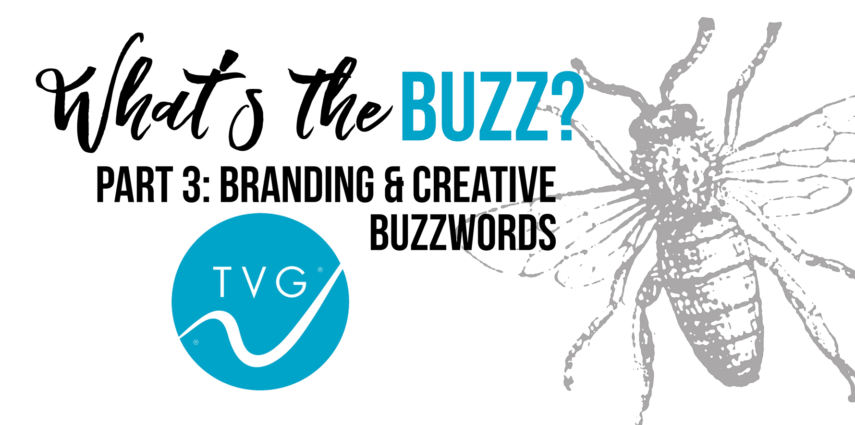What’s the Buzz? Part 3: Branding/Creative Buzzwords
By TVG Staff
Branding and creative departments within agencies use their own language, which can seem complicated to those outside of the field. Understanding these buzzwords can help you better communicate what your company needs for branding, or what #PRpros are trying to tell you. We’ve created a glossary of common terms in the world of branding and creative to help you sort through the noise!
Logo
This is a visual depiction of your company brand. Think of the famous Nike “swoosh” or the Target “bullseye.” When a logo is really effective, people can name the company just by seeing it.
Brand Identity
This is the entirety of the company’s representation in both print and digital formats. It is made up of all the visuals, logo color usage, tone of language, fonts and layout.
Color Palette
The choice of colors that are associated with the brand. These colors should be used across all materials, including packaging, web design, marketing materials, advertising and more.
- Want to learn more about the color system graphic designers use? The Pantone Matching System (PMS colors) are the industry standard for color conversions, printing palettes, and more. Pastels, neons and metallics are all part of the family.
Sub-brand
An extension of a larger company, often changing very little about branding in order to create more customers. For example: Diet Coke is a sub-brand of Coca-Cola. These sub-brands have similar fonts and logos, yet with a different color scheme and often unique marketing strategies.
Brand manual
A document that helps to align all of the brand assets to a single vision. The manual outlines the use of colors, fonts, logos and messaging to be used in any branded materials from business cards to advertising. These manuals help keep the aesthetic, tone, personality and messages cohesive.
Creative brief
A document that gives an overview of a design project- what it will entail and how it will be used. It is a roadmap for creative work. Briefs help to shape the project and often guide the creation of the brand manual and overall messaging.
Personas
Fictional characters created to embody a specific audience or demographic. For example, a grocery delivery company which who sells delivery service may target “Karen” a 38-year-old mother with children in elementary school who works part time and is active in her children’s school. She likes animals, has many friends, but doesn’t have a bunch of time to go grocery shopping because she’s so busy. This persona helps position messages to the right people, but also helps creative teams craft a message appropriate for that type of consumer.
Positioning
The space that the brand occupies both within the market, as well as the media sphere and wider community.
Voice
How a brand ‘sounds’ to consumers. This is how the word choice and language style affect customers and is perceived by the audiences of the organization or company.
Collateral
Marketing pieces that represent the brand. They can include brochures, digital media including ads promoted posts on social media, signs at events and even office space media.
Branding a company can be a huge undertaking, but it doesn’t have to be! Contact TVG and we can help creatively position your business for growth and success. Our branding experts can help you create or refresh your brand, messaging, voice and more.

